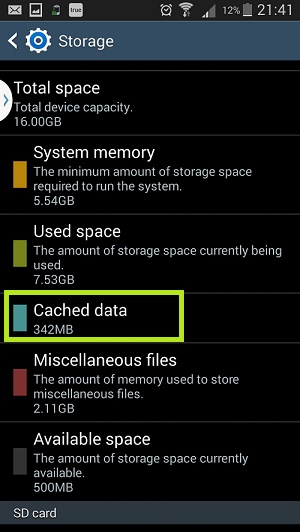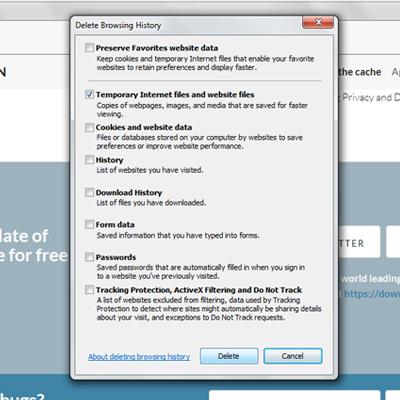Clear Cache Memory
Clear the Office cache on Mac. Add-ins are often cached in Office for Mac, for performance reasons. Normally, the cache is cleared by reloading the add-in. If more than one add-in exists in the same document, the process of automatically clearing the cache on reload might not be reliable. By clearing the cache between test runs, you ensure that caching does not skew any test results that measure the impact of a query design change. When to clear the cache for tabular models. Tabular models are generally stored in memory, where aggregations and other calculations are performed at the time a query is executed. Mar 19, 2016 Manually clearing memory cache and buffers enables the User to continue to work without rebooting. With Win7 and earlier, the following typically could be used to clear memory cache and buffers%windir% system32 rundll32.exe advapi32.dll,ProcessIdleTasks. Aug 27, 2020 Make your computer automatically clear RAM cache memory-Follow these easy steps to free cache memory on your system-1. Download EmptyStandbyList on your computer. Choose a particular place and then click on “Save” to save the application. Close the browser window. Click on the Search box beside Windows icon and type “Task Scheduler. Mar 23, 2021 Clearing your cache is a simple yet effective way of freeing up storage space on your iPhone and making it run faster. Here's how to do it in a few easy steps.
In our company, we have a cloud server running CentOS 7 as our demo server. However, the server’s MariaDB is always shutdown whenever our cronjob tries to restart the MariaDB server. The reason is because the server is running out of memory when the MariaDB server is restarting.
After monitoring the server’s resources usage using top or htop command, we noticed that the memory usage is always high because of the buffer/cache memory is holding the memory.
Linux always tries to use RAM to speed up disk operations by using available memory for buffers (file system metadata) and cache (pages with actual contents of files or block devices). This helps the system to run faster because disk information is already in memory which saves I/O operations.
Reference
The buffer/cache memory is actually useful for the server’s disk operations. However, it’s causing our website to fail. Therefore, we need to find a fix for it. After doing research online, we found a command which we can use to clear the buffer/cache memory.
/bin/sync && echo 3 > /proc/sys/vm/drop_caches
We then add the command above in our cronjob and run it before our cronjob to restart the MariaDB. After that, our server’s MariaDB never shutdowns by itself because of the insufficient memory anymore.
Hope the sharing would help others.
-->You can remove an add-in that you've previously sideloaded on Windows, Mac, or iOS by clearing the Office cache on your computer.
Additionally, if you make changes to your add-in's manifest (for example, update file names of icons or text of add-in commands), you should clear the Office cache and then re-sideload the add-in using updated manifest. Doing so will allow Office to render the add-in as it's described by the updated manifest.

Clear the Office cache on Windows
To remove all sideloaded add-ins from Excel, Word, and PowerPoint, delete the contents of the folder:
If the following folder exists, delete its contents too:
To remove a sideloaded add-in from Outlook, use the steps outlined in Sideload Outlook add-ins for testing to find the add-in in the Custom add-ins section of the dialog box that lists your installed add-ins. Choose the ellipsis (...) for the add-in and then choose Remove to remove that specific add-in. If this add-in removal doesn't work, then delete the contents of the Wef folder as noted previously for Excel, Word, and PowerPoint.
Additionally, to clear the Office cache on Windows 10 when the add-in is running in Microsoft Edge, you can use the Microsoft Edge DevTools.
Tip
Clear Cache Memory Mac
If you only want the sideloaded add-in to reflect recent changes to its HTML or JavaScript source files, you shouldn't need to clear the cache. Instead, just put focus in the add-in's task pane (by clicking anywhere within the task pane) and then press F5 to reload the add-in.
Note
To clear the Office cache using the following steps, your add-in must have a task pane. If your add-in is a UI-less add-in -- for example, one that uses the on-send feature -- you'll need to add a task pane to your add-in that uses the same domain for SourceLocation, before you can use the following steps to clear the cache.
Install the Microsoft Edge DevTools.
Open your add-in in the Office client.
Run the Microsoft Edge DevTools.
In the Microsoft Edge DevTools, open the Local tab. Your add-in will be listed by its name.
Select the add-in name to attach the debugger to your add-in. A new Microsoft Edge DevTools window will open when the debugger attaches to your add-in.
On the Network tab of the new window, select the Clear cache button.
If completing these steps doesn't produce the desired result, you can also select the Always refresh from server button.
Clear the Office cache on Mac
Add-ins are often cached in Office for Mac, for performance reasons. Normally, the cache is cleared by reloading the add-in. If more than one add-in exists in the same document, the process of automatically clearing the cache on reload might not be reliable.
You can clear the cache by using the personality menu of any task pane add-in.

Choose the personality menu. Then choose Clear Web Cache.
Note
You must run macOS version 10.13.6 or later to see the personality menu.
You can also clear the cache manually by deleting the contents of the ~/Library/Containers/com.Microsoft.OsfWebHost/Data/ folder.
Note

If that folder doesn't exist, check for the following folders and if found, delete the contents of the folder:


Clear Cache Memory Mac
~/Library/Containers/com.microsoft.{host}/Data/Library/Caches/where{host}is the Office application (e.g.,Excel)~/Library/Containers/com.microsoft.{host}/Data/Library/Application Support/Microsoft/Office/16.0/Wef/where{host}is the Office application (e.g.,Excel)~/Library/Containers/com.microsoft.Office365ServiceV2/Data/Caches/com.microsoft.Office365ServiceV2/~/Library/Containers/com.microsoft.Office365ServiceV2/Data/Library/Caches/com.microsoft.Office365ServiceV2/
Clear the Office cache on iOS
Clear Cache Memory Edge
To clear the Office cache on iOS, call window.location.reload(true) from JavaScript in the add-in to force a reload. Alternatively, you can reinstall Office.
Clear Cache Memory On Iphone
See also
